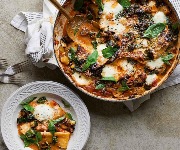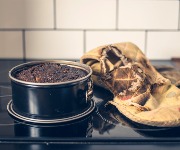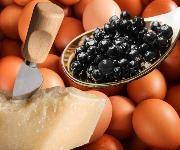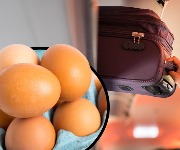Chinese New Year tips from Ken Hom and Ching He Huang
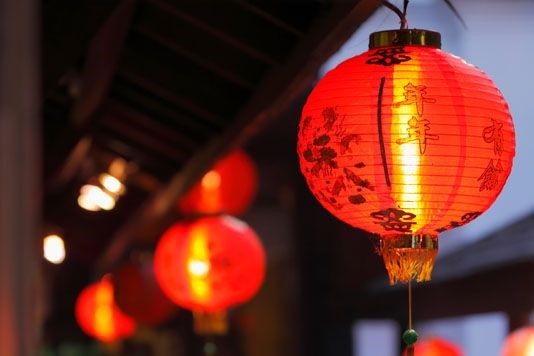
Join in the celebrations for the year of the goat with tips from the best.
This year, legendary chef Ken Hom tells me, he will be celebrating Chinese New Year with a “wonderful banquet.” This is, of course, not a one-off decision for the chef. “I always celebrate Chinese New Year in one of London’s wonderfully authentic restaurants.” He says they are among the best in Europe.
And the best dish to enjoy during the celebrations, according to Ken, is a whole steamed fish, which he says is a “symbol of prosperity and wealth for the New Year.”
Meanwhile, Ching He Huang explains that the word for ‘fish’ in Chinese is pronounced ‘yu’, which sounds like the word for ‘plenty’. So serving your guests fish is akin to wishing them a plentiful year.
The Year of the Goat
The New Year, starting on the 19th, will be the Year of the Goat, though the animal is also sometimes identified as a sheep or ram. Luckily for goats everywhere, they’re not part of Ken or Ching’s menus. They'll be dishing up noodles, fish, chicken and what Ching calls the “Holy Trinity” of Chinese cooking: plenty of garlic, ginger and chillies. Ken comments that these three, along with spring onions, are the ingredients he couldn’t live without.
People born in the Year of the Goat, says tradition, are mild mannered, shy and sympathetic, which doesn’t sound much like many of the chefs I know. But, Ken points out, people who are humble can “win the hearts and minds of their kitchen crew… and any chef who is shy and mild mannered is humble, and willing to learn! [And] any chef willing to learn is a great chef!”
Food metaphors
Each food item on the table at Chinese New Year is there for a reason, as they represent a certain facet of good wishes in the year to come.
|
Chicken |
Fortune |
|
Fish |
Prosperity |
|
Noodles |
Longevity |
|
Duck |
Fidelity |
|
Vegetables |
Cleansing of the system |
|
Wontons |
Gold ingots (wealth) |
|
Seaweed |
Wealth |
Apparently, you shouldn’t use knives or scissors on New Year’s Day, so that you don’t cut off fortune, which makes working in the kitchen a little tricky. Although Ken says that this is “just a metaphor”, so presumably shouldn’t be taken too seriously, he did also mention that he never cuts noodles.
While we don’t eat seaweed all that much in the UK, it really is a delicious food. For those unfamiliar with it, Ken says, it’s important to make sure it’s really dry before frying it. But don’t feel bad if you’d rather stick to vegetables that you know how to work with.
All of the plates should be served at the same time, which presents some practicality issues in most home kitchens. “Cook them in advance and keep them warm in the oven or steamer,” recommends Ching. Just make sure they’re not being kept too hot, and that meats are wrapped tightly in tinfoil to stop them drying before they reach the table.
She suggests making rice more exciting by cooking it in stock to add flavour with very little work, and topping each bowl with black and white toasted sesame seeds or sliced spring onions adds a “pop of colour.”
Chinese essentials and tips
There are certain things you’ll definitely want in your cupboard if you’re cooking Chinese food. Ching says that vital ingredients include Shaohsing rice wine, dark and light soy sauce (she uses Amoy), toasted sesame oil, five-spice powder, and clear rice vinegar and chilli sauce.
You might also want to get hold of some Sichuan peppercorns and Chinkiang black rice vinegar, but the items listed above are probably easier to get hold of. If you have a good Oriental supermarket near you though, have a look, as they’ll probably stock them. And if you can’t get hold of rice wine, pale dry sherry works.
Once you’ve gathered your other ingredients, make sure you’re cutting everything to roughly the same size. This ensures even cooking, and it’s also important to add things that take the least time to cook, like pak choy, right at the end. This is good advice for all styles of cooking!
Cutting your vegetables diagonally exposes more surface area, which means they will better absorb seasoning and cook faster too.
Ching also says that you should get your wok really hot before cooking. It should be slightly smoking before you start to cook, and it’s important to choose an oil that has a high heating point to match this. Good picks are sunflower, groundnut and vegetable oil. It’s equally important to let your wok cool down before you wash it gently, as sudden temperature changes can warp the metal.
What to cook
If you’re not sure what to cook, I think Chinese dumplings (gyoza/jioazi) are a good all-rounder to start off your meal. They’re a little fiddly to make but are absolutely delicious. Why not try them filled with poached pork, tofu and mushroom, or even try these cute-looking rabbit-shaped dumplings stuffed with bamboo and prawn if you’re up for the challenge.
For the main event, this Cantonese-style roast duck with a beautiful aroma of five-spice powder and hoisin sauce will get your guests salivating, while you might opt to serve these hoisin chicken lettuce cups on the side. If you want more, try making some of these top 10 Chinese recipes.
Ken Hom’s range of chilled ready meals are available from Tesco. To download Ken’s booklet for Chinese New Year 2015, visit kenhom.co.uk
You might also like:
Finding your way around a Chinese supermarket
Most Recent
Comments
Be the first to comment
Do you want to comment on this article? You need to be signed in for this feature


